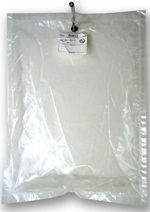Stack Gas Carbon Dioxide and its Biogenic Fraction
- Depending on fuel combusted, stack gases may have biogenic CO2.
- Biogenic or carbon-neutral stack gas CO2 is deductible from a company’s greenhouse gas inventory required for reporting under various regulations.
- Beta Analytic provides ASTM D6866 testing on stack gas CO2 and solid fuels. ASTM D6866 measures the biogenic fraction of solid fuels and their combustion emissions.
ASTM D6866 and D7459 – Standards for Stack Gas CO2 Testing
 ASTM D6866 is a standard method employing radiocarbon dating techniques to determine the percentage of “recently fixed carbon” (biogenic fraction) versus “old carbon” (non-biogenic fraction from fossil sources) present in a solid fuel or its stack gas emission. Materials in fuels (municipal solid waste, used tires, sewage sludge, refuse-derived fuels, etc.) with recently fixed carbon include those that are biomass like wood, paper, and others of animal or plant origin. Materials with old carbon include coal and other petroleum-derivatives like plastics. Through ASTM D6866, the amount of recently fixed carbon is known and correlated to a material’s biogenic carbon content. ASTM D6866 measures carbon 14, which is a carbon isotope present in biomass but absent in fossil inputs.
ASTM D6866 is a standard method employing radiocarbon dating techniques to determine the percentage of “recently fixed carbon” (biogenic fraction) versus “old carbon” (non-biogenic fraction from fossil sources) present in a solid fuel or its stack gas emission. Materials in fuels (municipal solid waste, used tires, sewage sludge, refuse-derived fuels, etc.) with recently fixed carbon include those that are biomass like wood, paper, and others of animal or plant origin. Materials with old carbon include coal and other petroleum-derivatives like plastics. Through ASTM D6866, the amount of recently fixed carbon is known and correlated to a material’s biogenic carbon content. ASTM D6866 measures carbon 14, which is a carbon isotope present in biomass but absent in fossil inputs.
ASTM D7459, on the other hand, is the standard providing specific procedures on the collection of stack gases for ASTM D6866 testing. A gas bag is needed to collect the CO2 from stationary emissions sources.
Stack Gas CO2 of Energy-Intensive Industries
Emissions from a stack are mostly carbon dioxide. Depending on the solid fuel combusted, this stack gas CO2 can have a biogenic or biomass fraction. Cement plants, for example, burn municipal solid waste or used tires in kilns to produce energy needed in making their products. The portion of MSW or used tires that is biomass produces biogenic CO2 when burned. The portion of wastes that are fossil in origin, on the other hand, emits non-biogenic CO2. The same is true for a plant that co-fires coal with biomass. The biomass portion of the fuel combusted also produces biogenic CO2.
In light of recent regulatory developments in North America and Europe, companies need to know the biogenic portion of the stack gas CO2 because it can be deducted from their greenhouse gas inventories, which are to be annually reported. The U.S. Environmental Protection Agency, in particular, requires reporting of biogenic CO2 separate from non-biogenic CO2 for facilities that combust MSW as fuel or co-fire biomass with fossil-based fuels.
Regulations Requiring Stack Gas CO2 Testing
There are several regulatory bodies and intergovernmental organizations that require testing of stack gas CO2; foremost of which is the US EPA with its mandate for companies emitting at least 25,000 metric tons CO2 equivalent to submit GHG reports annually. In Europe, companies who want to participate in the European Union Emissions Trading Scheme are also required to measure their stack gas CO2 to obtain carbon credits.
With members in the U.S. and Canada, the Western Climate Initiative also requires stack gas CO2 testing as part of its reporting protocol. Other organizations requiring stack gas CO2 testing include The Climate Registry and the California Air Resources Board (AB32).
A summary of current regulations listed in our website is found here.
Solid Fuels or Stack Gas CO2, Beta Analytic Can Measure Biogenic Carbon Content
ISO/IEC 17025:2017-accredited Beta Analytic accepts stack gas CO2 or solid fuels for ASTM D6866 testing. Flexibility of applicable samples is inherent in the standard. The lab also accepts gas samples stored in absorbent cartridges. Because the method involves converting samples into CO2 then to graphite, samples for ASTM D6866 analysis can be solids, liquids, or in gaseous form. More information on ASTM D6866 and its result interpretation are found here.